AAAI-23 UC @ the AAAI site
Return to the main AAAI Undergraduate Consortium page
AAAI 2023 main site
Thirty-Seventh AAAI Conference on Artificial Intelligence
February 7 - February 14, 2023
AAAI-23 Undergraduate Consortium
Meet our scholars!
Kaihua (William) Hou

Electrical Engineering and Computer Science Departments
Johns Hopkins University
Year: 4th Year Undergraduate
http://kaihua-hou.com
Kaihua (William) Hou is an undergraduate student studying Electrical Engineering and Computer Science at Johns Hopkins University. He works at the JHU Malone Center for Engineering in Healthcare under the mentorship of Dr. Mathias Unberath and Dr. Jithin Yohannan. He is also a visiting research assistant at the Massachusetts Institute of Technology, advised by Dr. John Guttag. His research interests lie at the intersection of machine learning, equitable healthcare, and clinical decision-making.
Poster Presentation
Predicting Visual Field Worsening with Longitudinal Optical Coherence Tomography Data Using a Gated Transformer Network
Abstract
Visual fields (VF) and optical coherence tomography (OCT) are two commonly used eye exams to diagnose glaucoma and track its worsening. However, two clinicians each examining a different test of the same patient may arrive at contradicting diagnoses. This is undesirable since neither test can be used as a sole objective standard for disease assessment, and the choice of test can heavily depend on non-clinical reasons (e.g. cost or availability) instead of the patient’s conditions. To help clinicians obtain the progressive trends of one eye exam given a time series of another, this project uses two gated Transformers (GTN): one Transformer learns changes in the same input feature across time, while the other one learns correlations between different input features at the same time stamp. This model significantly outperformed prior methods, and the feature importance of the GTN was investigated through Shapely analysis.
Research Interests
AI for Healthcare
Fun fact
He likes to play and watch soccer. He has also been playing the violin for 16 years.
Joseph Sankah
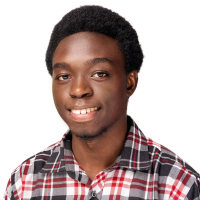
Department of Electrical Engineering and Computer Science
College of Engineering and Architecture
Howard University
Year: 2nd Year Undergraduate
Joseph Sankah is a sophomore undergraduate student majoring in computer science at Howard University. He is a software engineer and a tech enthusiast especially in the domain of Artificial Intelligence. He currently serves as an undergraduate researcher assistant in the Affective Biometrics Lab where he surveys and analyzes some select open-source Artificial Intelligence/machine learning biometric toolkits and tools used for face detection, recognition, and verification. To this end, he seeks to develop a vulnerability-and-testing protocol in a bid to investigate the robustness of these AI biometric models under the aegis of Dr. Saurav Aryal and Dr. Gloria Washington of the Affective Biometric Lab with support and funding from the Applied Laboratory Research for Intelligence and Security(ARLIS).
Poster Presentation
Image Sampling with varied noises and brightness for cyber-assessment of AI face biometrics models
Abstract
While the quest to evaluate the robustness of open-source Artificial Intelligence/machine learning biometric tools and toolkits seems to be fledging, the effectiveness in measuring their efficiency and robustness is almost always based on the outcome when original face images are fed into the AI biometrics models to the neglect of images with noisy features and varied brightness. Arguably, feeding our open-source AI biometrics models—in the domain of face detection, recognition, and verification—with a large pool of face datasets diversified with noisy features and varied brightness would go a long way to helping the AI biometric community to thoroughly survey and analyze these models in hopes of designing a methodology for their cyber-assessment and auditing. In that regard, the AI biometrics community would be able to test the robustness of the AI biometrics models against their vulnerabilities or weaknesses by comparing the actual outcome with their expected result.
Research Interests
AI, Computer vision, machine learning
Fun fact
He likes to play soccer, sing and play the trombone—in his school’s marching band :)
Aman Priyanshu
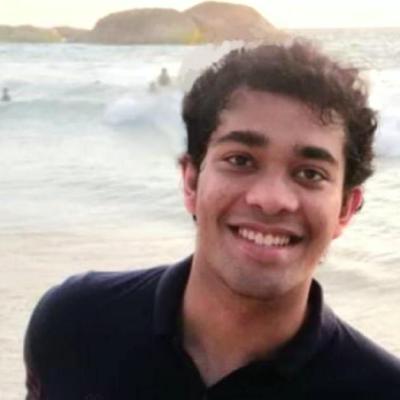
Department of Information and Communication Technology
Manipal Institute of Technology
Year: 4th Year Undergraduate
https://amanpriyanshu.github.io/
I am Aman Priyanshu, a senior at Manipal Institute of Technology, currently pursuing my undergrad in Information Technology. My research interests include Privacy Preserving Machine Learning, Explainable AI, Fairness, and AI for Social Good. I have recently focused on areas such as Reinforcement Learning, Causal Inference, Bias Mitigation, and Low-Resource Computations. I have had the opportunity to gain practical experience through internships, including working as a Privacy Engineer Intern at Eder Labs R&D Private Limited, a MITACS Research Intern at Concordia University, and as an Undergraduate Research Assistant at Manipal Institute of Technology. I have also had the opportunity to have several publications in the field of machine intelligence and security and have won awards for my projects. My explorations in technology are also extended to participating in hackathons, where I’ve applied my research to developing applications aimed at social good. I intend to pursue a doctoral after my undergrad.
Poster Presentation
SuperFedAvg - A superimposed network submasking approach towards Fairness integration into Federated Learning
Abstract
Deep Learning has seen expansive growth over the last decade. Especially within fields that entail learning sensitive information, like Healthcare, Legal-Proceedings, and even Social-Analytics. A lot of these domains have seen decentralization and private learning methods such as Federated Learning being adopted. However, ensuring Fairness within FL settings is difficult due to inequitable demographic representation. This work aims at incorporating disparate retention through superimposed supermasks to understand private attribute demographic association. It leverages subnetwork identification to detect attributes associated with demographic identities for bias mitigation. By employing continual-learning paradigms, we ensure performance retention alongside Fairness in a disproportionate representation setting.
Research Interests
Privacy-Preserving Machine Learning, Explainable AI, Recommendation Systems
Khushi Bhansali

CMNS
University of Maryland College Park
Year: 4th Year Undergraduate
https://khushi-bhansali.weebly.com
Khushi Bhansali is pursuing her Bachelor of Science from the University of Maryland College Park. She is majoring in Computer Science with a concentration in Machine Learning and has received dean’s list honorable mention every semester of her undergraduate studies. She is currently doing research for the Maryland Center for Blended Reality and has interned at Goldman Sachs, US FDA, and Johns Hopkins Applied Physics Lab. Outside of academics, she is the VP of Finance for a charity club named One for the World, a teaching instructor for the Maryland Center for Women In Computing, and a modeling editor for Chameleon, a university-led magazine for people of color.
Poster Presentation
Privacy Preserving Algorithms for VR/AR Sensor Data Streams
Abstract
Under the guidance of Dr. Amitabh Varshney, I have been capturing motion sensor data from the AR/VR headset. We discovered that heart and chest vibrations induce an involuntary movement of the head which can be used to infer heart rate. Body-signal side-channel adversaries could exploit this data to intelligently learn breathing patterns to detect arrhythmia or other heart conditions without consent. Deep learning algorithms can detect these privacy threats without relying on previous or common attack patterns. They recognize the presence of bad actors while preserving the privacy of the training dataset. Thus, I aspire to develop signal scrambling algorithms using privacy-preserving deep neural networks because of their high efficiency in data anonymization and ability to protect people from the new privacy risks that AR/VR systems pose.
Research Interests
AI, AR/VR, HCI
Fun fact
She likes to sing and she is part of a band. She also enjoys rowing in her free time.
Anna Prince

Linguistics and Government
Georgetown University
Year: 3rd Year Undergraduate
Anna is a junior at Georgetown University pursuing dual majors in linguistics and government. Her academic interests include propaganda, influence campaigns, and the intersection of technology and democracy. She hopes to pursue an advanced degree in computational social science in order to produce research that can assist government agencies, such as law enforcement and policy-makers, to make more informed and equitable decisions in the digital sphere. In her free time, she enjoys distance running and language-learning.
Poster Presentation
Using Linguistic Invention to Track Extremist Groups
Abstract
While the ability to detect harmful artificial online activity has improved, identifying and classifying harmful human groups remains a difficult task. This research proposal builds on Ashokkumar and Pennebaker’s (2022) use of LIWC to detect social media group membership, further arguing that n-gram analysis and sentiment classification of in-group neologisms could be a useful way of proactively identifying groups at risk of violence. If successful, this project could be a useful tool for law enforcement, as it would provide a real-time view of potential threats with fewer privacy trade-offs.
Research Interests
NLP, propaganda, influence campaigns
Fun fact
She is on her school’s club running and triathlon teams.
Supriti Vijay
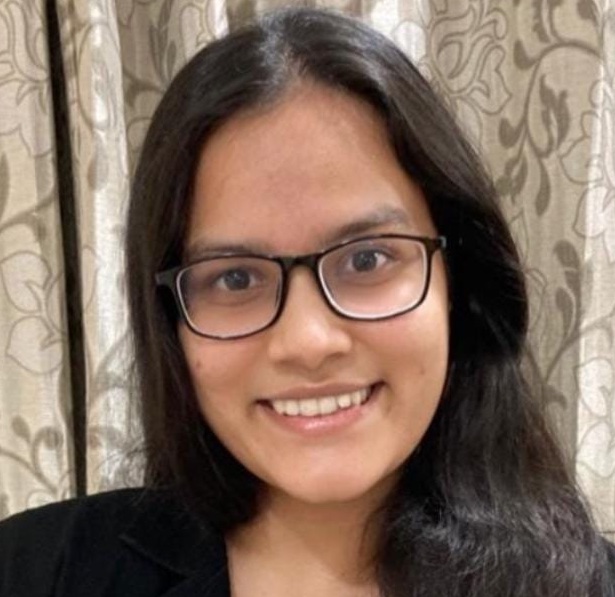
Department of Computer Science
Manipal Academy of Higher Education
Year: 4th Year Undergraduate
https://supritivijay.github.io/
Supriti is a senior at the Manipal Academy of Education, pursuing her bachelor’s degree in Computer science and Engineering. Her research interests lie in Natural Language Processing, computational social science, Explainable AI, and Social Networks. She is passionate about working on NLP for social good, making models fairer, accountable, transparent, and ethical. She is a recipient of the Adobe India Women-In-Tech Scholarship and has also been awarded the Mitacs Globalink Research Internship. Beyond research, she is motivated to empower and mentor girls to build their careers in STEM. She also runs a non-profit, Felasa, aiming to create awareness among women about legal and safety laws around them and also helps connect lawyers to victims of gender-based crimes. She plans to pursue a graduate degree in Computer Science specializing in NLP.
Poster Presentation
Mitigating Gender Bias in large language models using a semi-supervised regularizing function
Abstract
The presence of implicit bias in the text corpora is one of the most prominent issues while training any downstream NLP task. The exhibition of these gender biases emphasizes stereotypes prevalent in the real world onto models and causes drastic repercussions among those involved. Therefore, gender bias mitigation is an integral aspect of standard NLP tasks. Ideally, these models must be debiased before deployment. However, data augmentation is an expensive task for large corpora, while prior work on reconstructing word embeddings for debiasing may not always be conducive to performance reduction. Therefore, this work proposes training a semi-supervised regularizing loss function for debiasing large language models (LLMs). Integrating a regularizing loss function in the training phase, a method yet to be widely explored, would help us examine its effects on mitigating bias. This work also aims to create an easy-to-use library for debiasing to allow streamlined integration into most high-performance LLMs, contributing towards making models more fair and equitable.
Research Interests
Computational Social Science, Fairness, NLP for Social Good, Explainable AI
Fun fact
A dramatics and theatre enthusiast
Pratinav Seth
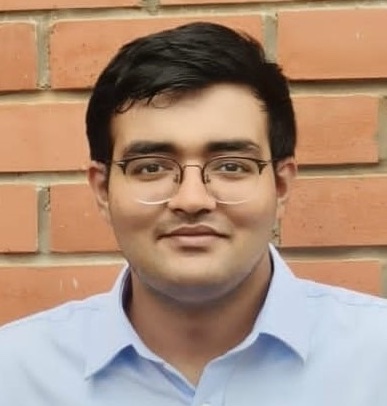
Dept. of Data Science & Computer Applications, Manipal Institute of Technology
Manipal Academy of Higher Education
Year: 3rd Year Undergraduate
https://ptnv-s.github.io/
Pratinav Seth is a junior at Manipal Institute of Technology pursuing a Bachelor’s in Technology with a major in Data Science. His research interests include Uncertainity Quantification, Medical Imagery, Trustworthy AI, and AI for Social Good. He is an Intern at KLIV Lab, IIT-Kharagpur working on Trustworthy Deep Learning based applications for Radiology based disease diagnostics. He is the Executive Head of the Research Society Manipal, an initiative to promote and facilitate the development of a research community among undergraduates. After obtaining his undergraduate degree, he intends to get a doctoral degree aimed at Model agnostic solutions for Quantifying Trustworthiness.
Poster Presentation
Model Agnostic Uncertainty Aware Machine Learning Metrics
Abstract
With the advent of technology and increased availability of resources, many applications have deployed AI-based models in some form or shape. However, ensuring that these systems behave responsibly and are trustworthy is critical. The uncertainty estimation is essential to trust confident model predictions for screening automation and referring uncertain cases for manual intervention of a domain expert. Previous works involve building a completely different architecture which is typically costly when deployed. Here we aim to develop a model-agnostic solution to monitor the trustworthiness and confidence of the model predictions, which can be incorporated with currently deployed models and signal a failure in case of low confidence. The impact of this work will be immense and will change the outlook and increase the confidence of everyone towards AI. It can be impactful in areas such as healthcare, where it would significantly aid in risk appraisal, lowering the possibility of potential misdiagnosis.
Research Interests
Trustworthy AI, Uncertainty Quantification, Medical Imagery & AI for Social Good
Fun fact
He is a avid F1 fan and a soccer fan ( a ManU fan).
Nora Lewis
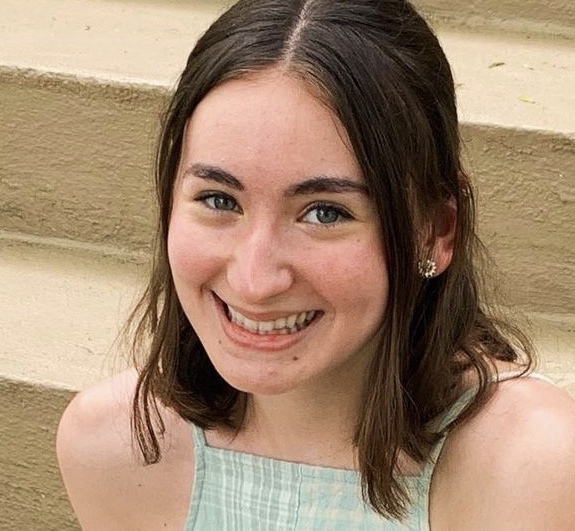
School of Public Affairs and Department of Computer Science
American University
Year: 3rd Year Undergraduate
https://www.linkedin.com/in/willa-potosnak-4679b119a/
Nora Lewis is a junior at American University studying Data Science in Justice, Law, and Criminology and Computer Science. She is also in the combined BS/MS program for Data Science with a concentration in CS. At American, she works as a teaching assistant in the Computer Science department and as a research assistant at the Polarization and Extremism Research and Innovation Lab (PERIL). In her free time, she likes to read, listen to music (specifically Taylor Swift), and exploring DC!
Poster Presentation
Sentiment Analysis on Social Media Posts to Identify Dogwhistles
Abstract
Dogwhistle is a type of coded language that primes an in-group to respond in a certain way, while the general population ignores it. These coded words fly under the radar of most social media terms of services, even though many extremist groups use these as a call to arms, because the words themselves are not seen as harmful. Being able to recognize the use of dogwhistles in social media posts would help to limit the outreach of extremist groups and harmful rhetoric and help prevent possible indoctrination. Using NLP and the Anti-Defamation League’s Hate on Display database, we trained a ML model to pick up on these dogwhistles in social media posts. Dogwhistles work best when the general public doesn’t understand them- so bringing them into the spotlight could render them useless.
Research Interests
extremism and AI
Fun fact
She is a Computer Science TA!
Teanna Barrett

Department of Electrical Engineering and Computer Science
Howard University
Teanna Barrett (she/her) is a senior Computer Science major and Philosophy minor from Howard University. Her research aims to interrogate the design, deployment, and evaluation of Machine Learning systems to understand contemporary anti-blackness and inform liberatory technology. She currently works with the Affective Biometrics Lab under the direction of Dr. Gloria Washington at Howard University and the Social Futures Lab under the direction of Dr. Amy Zhang at the University of Washington.
Poster Presentation
Investigating Skin Tone Stratification in Recidivism Prediction Models
Abstract
Proprietary Machine Learning (ML) technology embedded in products such as PredPol and COMPAS has been found to target Black and Brown people more than White people. Thus, the material inequities within the United States policing system are replicated in ML models. However, there is another systemic disparity that is not well-researched in the ML community, skin tone stratification. This research study aims to investigate skin tone bias in criminal justice ML models and particular recidivism models. With manual skin tone annotations, recidivism scores disaggregated by skin tone categories can be analyzed for disparities. In addition, this project aims to further interrogate the relationship between ML and the prison industrial complex.
Research Interests
ML Fairness, Critical HCI, Social Computing
Collin Coil

Department of Mathematics and Statistics
Year: 3rd Year Undergraduate
American University
Collin Coil is a junior studying pure mathematics and data science. He is engaged in applied statistics and data science research through the AU Center for Data Science, and he is interesting in pursuing a graduate program to focus on machine learning once he finishes his undergraduate degree. Outside of academics, Collin is a member of the American University Rowing Club and enjoys baking.
Poster Presentation
Energetic Molecule Development via Conditional Implicit Maximum Likelihood Estimation (CIMLE)
Abstract
The need for high-quality training data currently serves as a bottleneck for the development and deployment of machine learning models. Currently, manually generated data is often too expensive, and machine labeled data suffers from bias. One potential technique to satiate the growing data requirements by using artificial intelligence to generate synthetic data. One promising generative technique is known as Implicit Maximum Likelihood Estimation. This approach has yet to be applied to large-scale synthetic data generation, but it has advantages over other models. These include no mode collapse, vanishing gradients, or training instability.
Research Interests
Generative AI, Statistical ML
Fun fact
He is a member of my university’s varsity rowing team.
Chi Phuong Huynh
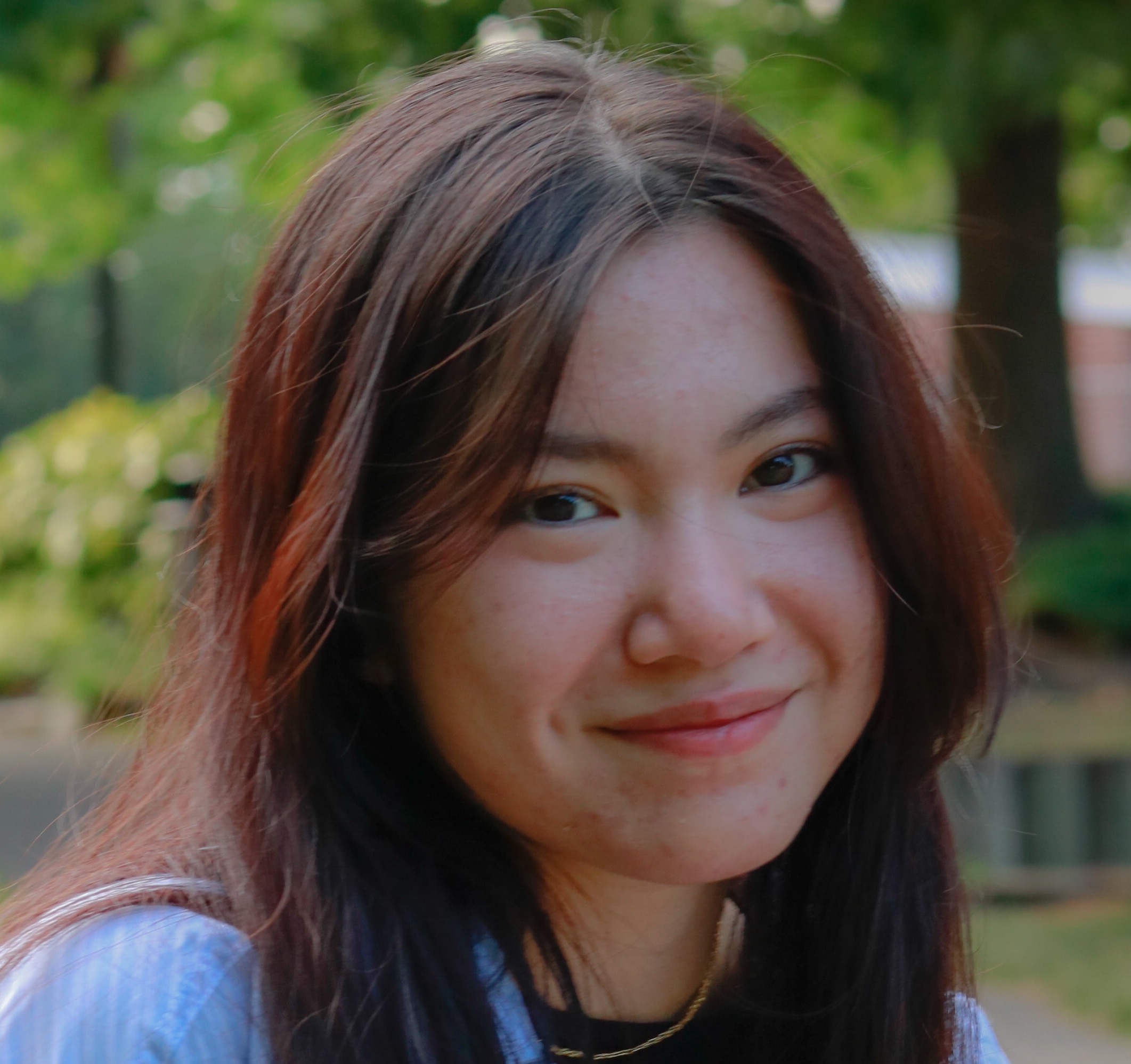
Computer Science
Franklin and Marshall College
Year: 4th Year Undergraduate
Chi is an undergraduate student at Franklin & Marshall College, studying Computer Science and Applied Mathematics. Her research focuses on improving multi-modal machine learning algorithms and applying them to higher idea abstraction levels and data processing problems. She plans to continue work as a Ph.D. student, working on highly applicable AI and machine learning models. She is currently working with professor Brad McDanel (Franklin and Marshall College) on improving text-to-image transformers and professor Chen Sun (Brown University) on AI for computational creativity.
Poster Presentation
Poster Presentation: Improving Vision and Language Machine Learning models via Input Processing and a Sampling Schedule
Abstract
Transformers have become popular in the computer vision field due to their superior performance compared to CNNs, however, they are hindered by extensive training time. My project focuses on using input modifications method to improve performance of vision and multi-modal transformers and diffusers model. By patch removal or concatenating patches, we can improve the computational complexity of these machine learning models and help them be more robust at inference time. I investigated data sparsification and scheduling with vision transformers. As input images for transformers are split into patches, by cyclically scheduling the removal of the less important patches, we can reduce training time by 31% with minimal loss to accuracy. Recent papers have also showed that by stacking or masking patches, we can also reduce training time while not risking information loss. Applying similar ideas to text-to-image transformers and diffusion models can yield improved computational complexity and performance.
Research Interests
Computer Vision, NLP
Fun fact
She is an oil painter. She plants mint and tulips in her free time.